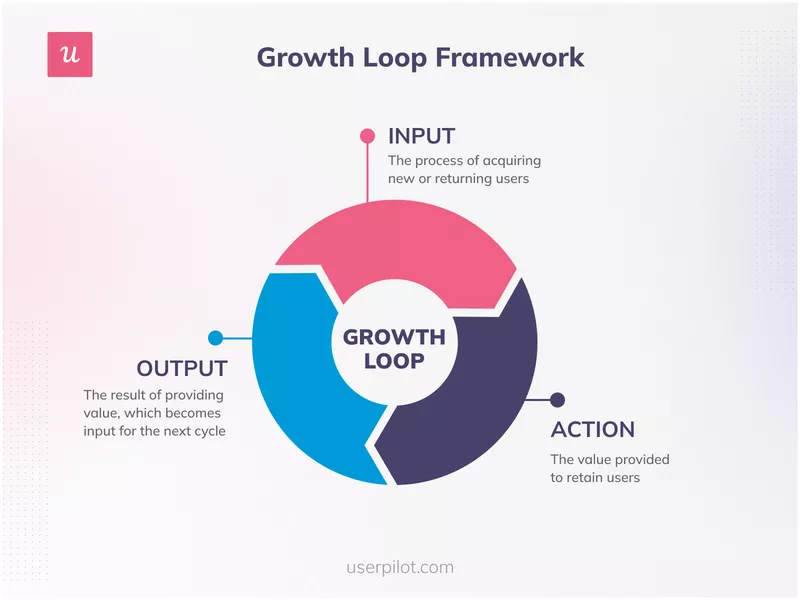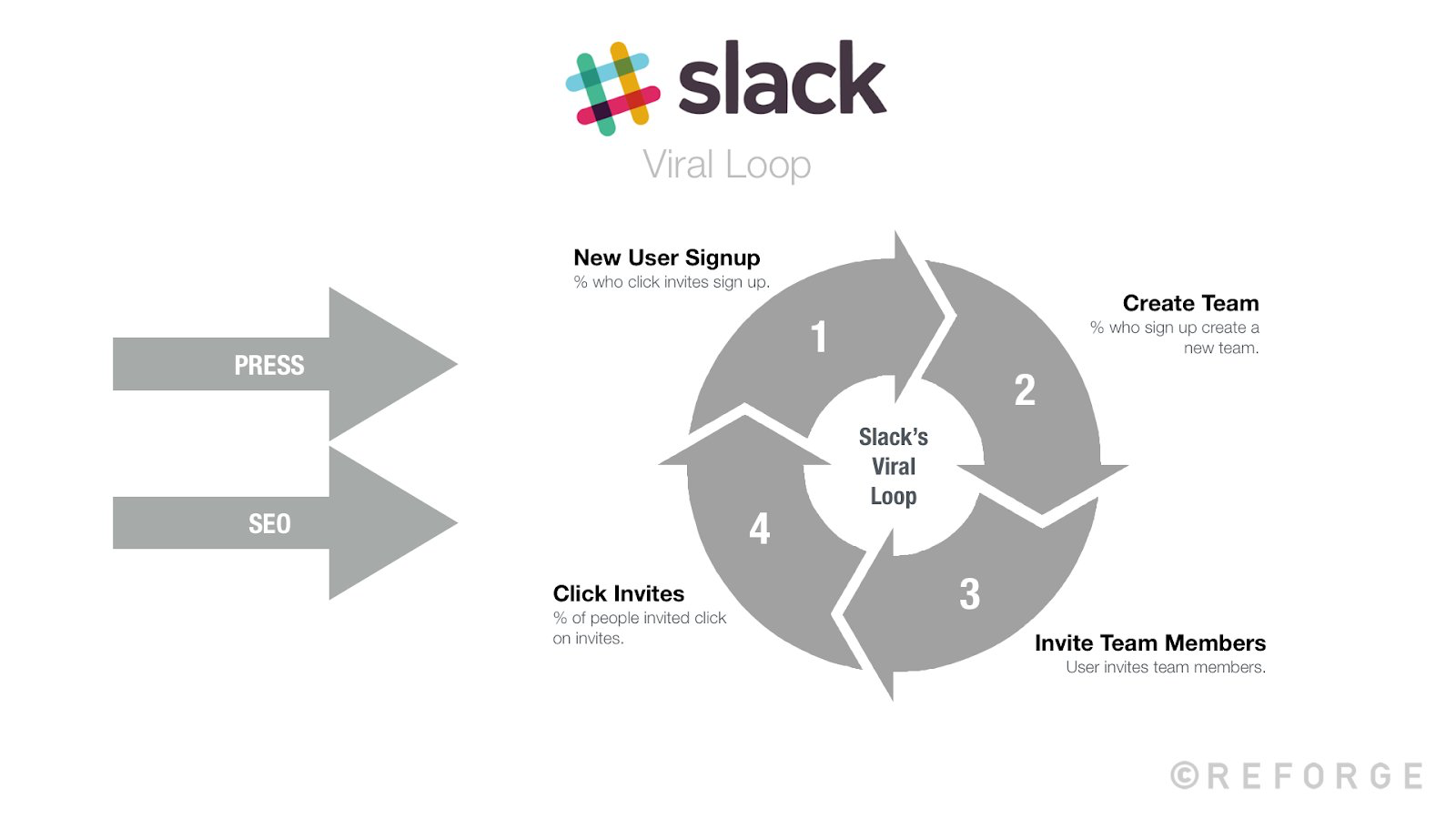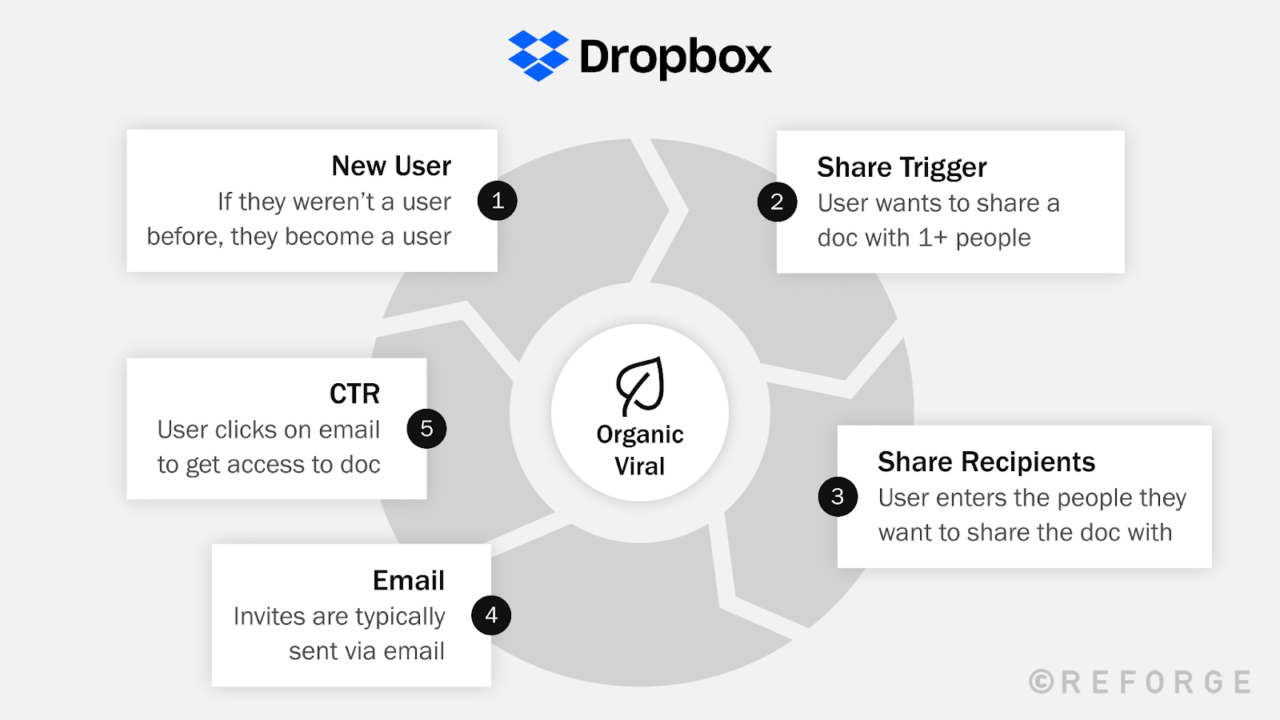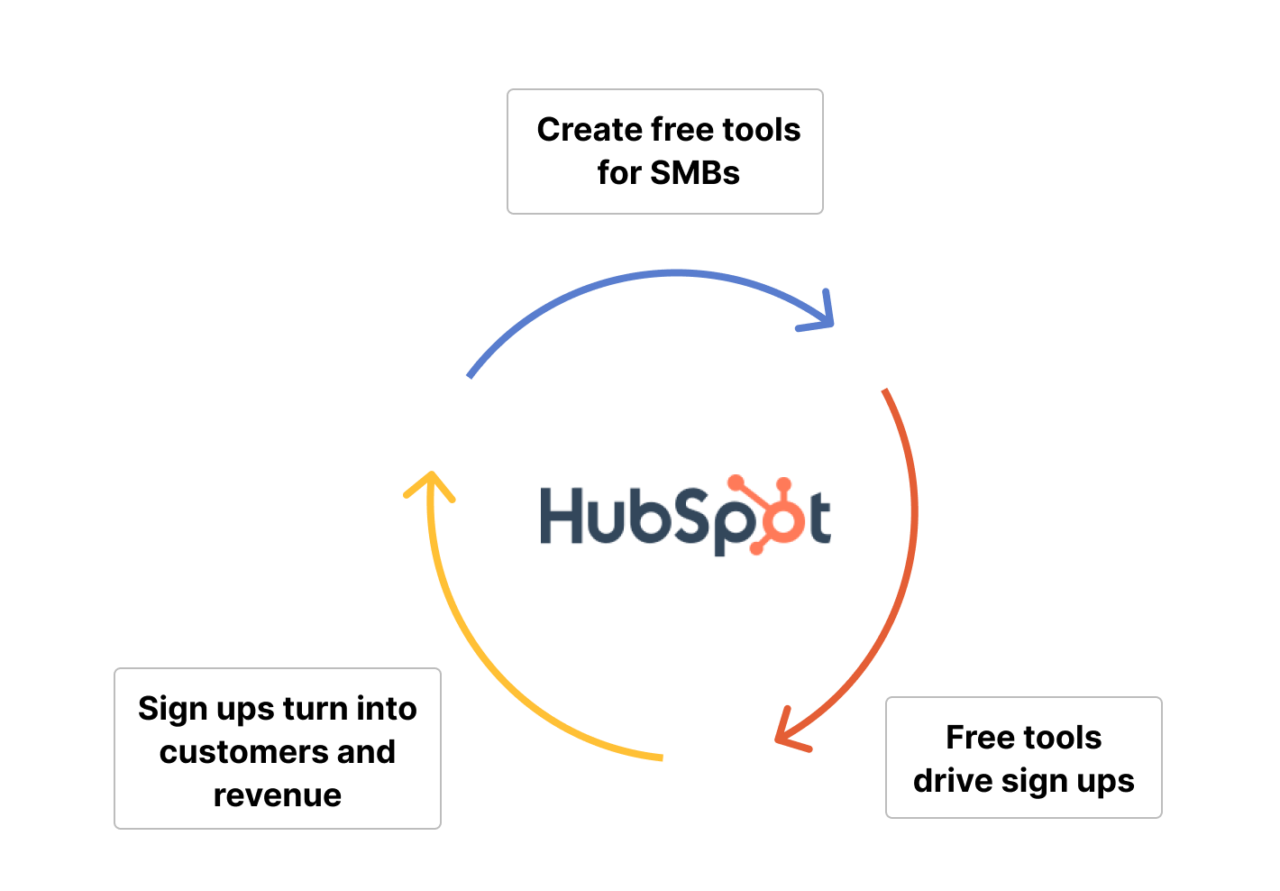What are Growth Loops? And How It Can Scale Your Company

Unlocking sustainable customer led growth is central for every business. An invaluable key to this growth lies in understanding and implementing growth loops. These are powerful, self-sustaining systems offering continuous momentum for business expansion. But why are they vital?
This article delves into growth loops, providing critical insights into different types, their operation, and real-life application by successful companies. In today’s fast-paced business landscape, learning about growth loops isn’t just an option; it’s essential. They are the catapult for driving business metrics upwards, propelling your organization towards exponential growth. Embrace the loop, embrace the growth.
Grab your free template of the growth marketing playbook.
What are growth loops
Growth loops are a powerful strategy used by businesses to achieve sustainable, exponential growth. Instead of typical linear models for customer acquisition and retention, growth loops focus on creating a cyclic, self-sustaining process that propels continuous growth.
Growth loops can trace their origins back to the concept of product metrics framework, first proposed by Dave McClure, a Silicon Valley entrepreneur. Named for the acronym ‘AARRR’, Pirate Metrics emphasize five key aspects: Acquisition, Activation, Retention, Referral, and Revenue. The idea is to track user behavior through these stages to understand your business flow.
Growth loops build on this concept but take it a step further by adding a cyclical element to the process. Instead of viewing these stages linearly, growth loops view them as a continuous cycle, where each stage feeds the next, creating a self-reinforcing and sustainable system of growth. This subtle shift from a linear to a cyclical perspective is what has made growth loops an honored member of the growth marketing services list.
Read more: Demand generation vs Growth marketing. What is better for your business?
Get a free website audit and improve your conversions with Dashly experts
Let’s schedule a 30-minute call and find out how to:
- Improve your website conversion.
- Grow your ROI/ROMI with proven hypotheses that fit your audience.
- Optimize or launch ad channels without additional budget.
- Decrease SLA workload by saving their time on lead processing.

Growth Loops Framework
The system comprises three core elements, delineating the essential structure of growth loops:

- Input embodies the techniques deployed to capture new users. These can encompass avenues like advertising, social media propagation, search engine optimization, email marketing, and more.
- Action indicates the steps a user follows to extract value from your offering, such as employing the product for the initial time or delving into fresh attributes.
- Output represents the multiplying effect stemming from user engagement. Crucially, this moment is about realizing an increased user base and enhanced influence, signifying the fulcrum of the growth loop.
The fundamental premise here is that each cycle reinforces the next, creating a positive feedback loop that results in continuous growth.
So, as a business owner or marketer, understanding growth loops and effectively implementing them can lead to remarkable customer acquisition, retention, and growth, outshining the conventional, linear strategies of growth.
How Growth Loops Change Everything
Traditional marketing funnels don’t leverage the most potent benefit of digital platforms — the ability to scale limitlessly with virtually no additional costs. Here’s where growth loops outshine: they harness this power while being a sustainable, self-perpetuating system, inherently maximizing your marketing returns and growing your resources exponentially.
The impact is vast. With growth loops, businesses are no longer solely dependent on expensive advertising campaigns. Rather, they rely on the systematic and continuous flow of new users. And as these loops infuse energy into the entire system, they boost overall business performance and positively impact the bottom line.
Growth loops benefits a company
- Sustainable Growth: Growth loops offer a continuous, self-reinforcing cycle of growth. As each loop feeds the next, it creates a virtuous cycle that fuels sustainable and lasting growth.
- Efficient Use of Resources: Growth loops are efficient as they optimize the use of existing resources. By reinvesting the revenue generated back into user acquisition, they make the most of what’s already available.
- Stronger User Engagement: Because growth loops rely on engaging users in ways that add value, they contribute to stronger user engagement. More engaged users tend to be more satisfied and loyal, leading to better customer retention rates.
- Better Control Over Growth: Growth loops provide a data-driven framework to guide growth efforts. By focusing on specific metrics at each stage of the loop, companies can better control and steer their growth in desired directions.
- Low Dependence on External Factors: Because growth loops are inherently self-sustaining, they lessen a company’s reliance on external factors like ad campaigns or market trends, resulting in a more resilient growth strategy.
- Scale Up Effectively: As each cycle of the growth loop generates greater user value than the last, the potential for scale in growth loops is phenomenal. Companies can reach larger audiences, expand their markets, and grow their business exponentially.
Read also: Grab your free example of a growth marketing strategy template
Types of Growth Loops
As a growth marketing expert, I find the beauty and strength of growth loops in their diversity and adaptability. There are several types of growth loops, each with its unique properties to better suit different businesses, their growth dynamics, and strategies. Here are a few noteworthy ones:
Viral Loops
A classic among growth loops, their main strength lies in their ability to facilitate fast, exponential growth. These loops are common in quickly scalable platforms like social media apps or multiplayer games. They rely heavily on users sharing the product, creating a potential viral effect.
Example
Facebook. When a user posts content or interacts with posts, it gets shown to their friends, which encourages those friends to engage with the content and use the platform more.
Content Loops
The gold-standard in platforms where user-generated content is vital, like blogs or review platforms. The content created by users brings in organic traffic, which then attracts even more users. This self-sustaining loop becomes stronger with each iteration, making your platform richer and further widening your user base.
Example
Medium, the popular online publishing platform, leverages content loops. User-generated articles improve the platform’s SEO ranking, attract more readers, and encourage other writers to contribute their work.
Sales Loops
Used predominantly in sales-driven organizations, sales loops typically involve affiliate marketing or referral programs. They provide incentives to existing users for new customer acquisition. Successful sales loops create a network of customers procuring new customers, leading to a strong loop of sustainable growth.
Example
Dropbox’s referral program is a leading example of a sales loop. Users gain extra storage space by referring friends, which leads to new user acquisition and further referrals.
Product Loops
Favored by companies with strong product differentiation or proprietary features, these loops focus on using features of the product itself to drive growth. They intertwine the product journey with the user acquisition process, enticing new users and ensuring higher retention rates.
Example
Apple’s product ecosystem is the epitome of product loops. Each of their products integrates perfectly with others, encouraging users to stay within the ecosystem and continually purchase new Apple products.
Read more: PLG Product Led Growth Marketing: a step-by-step guide to hacking product growth
Investment Loops
Mostly used in platforms facilitating peer-to-peer transactions like crowdfunding or peer lending platforms. Such loops attract potential investors or lenders while also bringing in those seeking investments or loans, hence simultaneously catering to both sides of the market.
Example
Kickstarter, a crowdfunding platform, exemplifies the investment loop. The more unique projects users launch, the more backers and potential project creators get attracted to the platform.
Data Loops
They leverage the use of data to attract more users and retain the existing ones. Businesses that have robust database systems like search engines or recommendation platforms use these loops. With data loops, more data input by users improves the product’s quality, drawing in more users and more data.
Example
Google’s search engine showcases a classic data loop. The more people use Google, the more data Google amasses to improve its search algorithm, thus providing better search results, attracting more users, and collecting more data.
Every growth loop type has its specific merit and ideal application, but the ultimate strength lies in understanding how to best fuse a growth loop with your business’s inherent characteristics, thus creating a powerful engine for sustainable growth.
Raise conversion rates on your website with a free audit from Dashly experts
Let’s schedule a 30-minute call and find out how to:
- Improve your website conversion.
- Grow your ROI/ROMI with proven hypotheses that fit your audience.
- Optimize or launch ad channels without additional budget.
- Decrease SLA workload by saving their time on lead processing.

Growth Loops Examples: Slack
Slack, the team communication tool, smartly utilized Viral Loops for its growth model. When a user signs up, they typically represent an entire growth marketing team. Thus, they invite their team members to join Slack to begin communicating.

Their process of creating a workspace and inviting members initiates a Viral Loop as each member, in turn, brings more of their contacts onto Slack. In this case, the company didn’t need to rely on aggressive marketing campaigns. Instead, they harnessed their users’ desire — seamless team communication — to fuel their Viral Growth Loop.
Growth Loops Examples: Dropbox
Dropbox, the cloud storage service, harnessed Sales Loops or Referral Loops to increase its user base. They rewarded both the existing user and the new user with additional storage space for each successful referral.

Not only did this lower the cost of acquiring a new customer, but it also incentivized users to become ambassadors of the service. Every new user acquired through this loop had the potential to acquire more users. The beauty of their callback to a referral program is that they treated storage as currency, trading space for marketing efforts done by the users themselves.
Growth Loops Examples: Hubspot
HubSpot, the provider of marketing, sales, and service software products, implemented a Content Loop. They produced various resources such as eBooks, webinars, templates, and blogs that potential users can access for free.

This high-quality, valuable content attracts massive organic traffic to HubSpot’s site. Some of these visitors eventually convert into customers, boosting the company’s growth. The continuous production of new content keeps this loop going. It acts as a magnet to attract traffic and ultimately convert visitors into customers.
Get more inspo for your growth strategy from the best 👇
Thanks! Here’s your list of must-read books on growth hacking

How to Choose The Right Growth Loop
Choosing the right growth loop is critical for your business, as it sets the foundation for sustainable and scalable growth. Here is an ultimate guide on identifying the perfect growth loop for your enterprise:
Understand Your Business
Before diving into growth loops, you need to have a deep understanding of your business model, product/service, and target audience. It’s essential to know:
- What value does your product/service offer?
- Who benefits most from your product/service?
- What motivates your customers? What are their pain points?
Evaluate Your Current Growth Strategy
Reflect on your current growth strategy:
- What’s working and not working?
- Are there any steps in your current customer acquisition or retention process that could be turned into a growth loop?
Consider User Behavior
Next, contemplate the behavior that could support your growth:
- What actions are your users already taking that contribute to your growth?
- Could these actions be amplified, creating a virtitious cycle?
Decide On The Growth Loop Type
Take time to understand different growth loop types and select the one fitting your business type and goals.
- Viral Loops: Best for businesses with products that users can share.
- Content Loops: Ideal if your platform involves user-generated content.
- Sales Loops: Beneficial for companies that can setup robust referral programs or affiliate marketing.
- Product Loops: Great for businesses with strong product differentiation.
- Investment Loops: Suitable for platforms facilitating peer-to-peer transactions.
- Data Loops: Perfect for businesses that can leverage user data to attract more users.
Test and Refine
Finally, once you’ve chosen a growth loop, test it, optimize it, and adjust as necessary:
- Monitor the success of your chosen growth loop.
- Iterate and make changes based on feedback and results.
- Continue the cycle of testing, learning, and refining.
Rightly chosen and properly executed growth loop can serve as an engine that propels your business to new heights. Remember, the loop you choose should align with your key business attributes, catering to your unique needs and objectives.
How to Measure Your Growth Loop
To truly harness the power of a growth loop, it’s crucial to measure its performance correctly. Here’s your ultimate guide to effectively measuring your growth loop:
- Identify The Key Metrics
Firstly, business growth experts pinpoint the metrics that truly matter. While specific metrics will vary based on your business and the type of growth loop applied, here are a few generally important ones:- Acquisition: The number of new users entering your loop.
- Engagement: How these users interact with your product/service.
- Monetization: The value generated by these user interactions.
- Choose The Right growth marketing tools
To assess these metrics, you need to deploy the right measurement tools. Google Analytics, Amplitude, Mixpanel, or other growth marketing analytics platforms can provide valuable insights. - Monitor Loops Over Time
Growth loops aren’t a one-and-done deal. Monitoring your key metrics over time will offer a more accurate depiction of your growth loop’s success. - Understand The Interactions Between Different Loops
If you’re using different loops simultaneously, understand how they interact and affect each other. These interactions can offer crucial insights to optimize your loops and overall growth strategy. - Analyze And Learn
Don’t just collect data — analyze it. Use the data to uncover patterns, diagnose issues, and understand what’s working. This will give you valuable insights into how to further refine your growth loop. - Iterate And Improve
The goal of measuring your growth loop is to identify areas of improvement, then iterate and enhance. Make data-driven decisions to augment the efficiency of your growth loop.
By meticulously measuring and monitoring your growth loop, you can keep growing your business sustainably. Follow these steps, and let your loop drive your business growth, steering you towards success.
To sum up
Unleash the power of sustainable growth for your business with Growth Loops, a game-changing framework that upstages traditional linear strategies. Learn how LinkedIn, Venmo, Slack, and more have efficiently used growth loops, such as viral, content, and sales loops, to build a user base and fuel continuous growth. This article provides you with concrete steps to choose and implement a growth loop tailored to your business nature and objectives.
Stay ahead in the marketing game by subscribing to the Dashly newsletter where you get access to top-flight strategies and unmatched ideas aimed at scaling your marketing efforts. Get on board today and let growth loops drive your success story!
Get a free website audit and improve your conversions with Dashly experts
Let’s schedule a 30-minute call and find out how to:
- Improve your website conversion.
- Grow your ROI/ROMI with proven hypotheses that fit your audience.
- Optimize or launch ad channels without additional budget.
- Decrease SLA workload by saving their time on lead processing.

FAQ
What is a growth loop?
A growth loop is a strategic framework that businesses employ to achieve sustainable and scalable growth. Unlike traditional linear models, it focuses on cyclic, self-sustaining processes that continuously propel user engagement and growth, turning the process into a perennial cycle.
What are the types of growth loops?
There exist various types of growth loops, including viral loops (used by social media apps or multiplayer games), content loops (employed on platforms involving user-generated content), and sales loops (utilized in affiliate marketing or referral programs), among others. The choice of the loop should align with the business’s nature and objectives.
How does a growth loop differ from a marketing funnel?
While a marketing funnel is a linear process that moves customers through different stages from awareness to purchase, a growth loop is a cyclical process where user acquisition, engagement, and monetization fuel and sustain each other, creating a continuous growth cycle.
How can I choose the right growth loop for my business?
Choosing the right growth loop involves understanding your business, your product/service, evaluating your current growth strategy, considering user behavior that could support your growth, and selecting the growth loop type that best harmonizes with your business. Continuous testing, refining, and optimization are also crucial in this process.
What are some successful examples of growth loops?
Numerous companies have successfully integrated growth loops into their strategy, such as LinkedIn (using network loops), Slack (using viral loops), Dropbox (utilizing a referral loop), and HubSpot (leveraging content loops).
How can I measure the success of a growth loop?
Key metrics to track while measuring the success of a growth loop include Acquisition (the number of new users), Engagement (how users interact with your product), and Monetization (the value generated). It’s essential to consistently monitor these metrics over time and iterate your strategies based on insights gleaned from data analysis.
Read also:
- 25 Growth Marketing Books to Skyrocket Success
- 22 SaaS growth hack Facebook tactics to boost your business
- Skyrocket your company revenue with a complete guide to RevOps Revenue Operations
- RevOps vs Sales Ops: know the difference
- RevOps tech stack: guide to the best tools
- Revenue operations metrics: 10 metrics and KPIs to track your performance
- B2B growth marketing: accelerating business success
- Growth marketing vs performance marketing: what to choose for your business?
- Growth marketing newsletter: 18 experts digests for regular insights
- Product led growth metrics: 13 key indicators for SaaS companies to track
- PLG tools: ultimate guide to the best instruments
- Benefits of Product led growth: 12 PLG benefits for your business
- Top 10 product led growth software your competitors use in 2023
- 10 product led growth companies that boost their development right now
- Sales led growth: what is it and why your business needs it
- Growth marketing case studies: 12 stories with detailed tactics and numbers achieved
- RevOps best practices: 13 tactics to implement this year
- Growth marketing framework: Battle-tested insights from Dashly experts
- Growth Product Manager: Charting new frontiers in product scaling
- 20 product led growth examples to inspire your team [expert edition]




